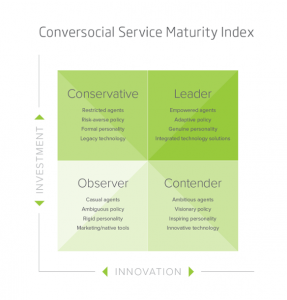— April 23, 2019
Building a successful virtual team can be a major challenge for an organization. Not only must the team have the right infrastructure and tools in place to collaborate effectively from a distance, they also need the right team members who are capable of building productive relationships and holding one another accountable. While there are many strategies and best practices for launching a successful virtual team, the work doesn’t stop there.
Sooner or later, new members will need to be added to the team. When the time comes to integrate someone new into the team structure, organizations shouldn’t simply rely on an informal unstructured approach to get the new member up to speed. Like any new employee, new virtual employees need to go through a defined onboarding process that provides them with the tools and support they need to collaborate effectively.
Why Onboarding Virtual Team Members Is Essential
First Impressions Impact Retention
Multiple studies have found that the majority of new hires decide whether or not to stay with a company for the long-term within the first three to six months of employment. That means the first impression a company makes on new team members is critically important. If an employee encounters early difficulties or setbacks, they can easily become less engaged and begin thinking about moving on. An effective onboarding process can provide the support people need to feel comfortable and confident in a new situation.
For virtual team members who will be working remotely, onboarding is even more important because it is often their sole point of contact with the organization. A colocated employee has the benefit of touring a physical office, getting to know coworkers, and having a clearly defined work routine. When working remotely, however, they don’t have the opportunity to become familiar with the organization and its culture organically. Without proactive onboarding, they can easily become alienated and detached from the company, which makes them more likely to think of themselves as freelancers ready to jump at the next job opportunity.
New Members Mean New Relationships
Virtual teams are only as effective as the relationships between their members. Successful teams develop strong relationships that provide a foundation for the trust and accountability needed for success. When bringing a new member into a virtual team, it’s critical that the onboarding process does everything possible to integrate them into the group and help them begin to build trust and form relationships.
Ideally, onboarding remote employees should include a face-to-face meeting with the entire team. Virtual employees are often separated by significant distances, however, so it may not be possible to hold an in-person meeting. In such cases, virtual meetings using video conferencing software can provide many of the same benefits. These meetings allow the new team member to get to know everyone they’ll be working with, which helps them feel welcome and accepted.
Expectations Must Be Clearly Established
Accountability is a huge part of working in a virtual team. Since team members are often working in isolation and in different physical locations, they have to rely on one another to complete assigned tasks and follow through on commitments. In most cases, virtual teams have processes and systems in place to ensure that everyone is held accountable and is meeting expectations. Project management software and various communication platforms help them to collaborate effectively with minimal confusion.
But for a newcomer to the team, these processes can present quite a challenge. Perhaps they’re not familiar with the software being used or they don’t know what communication channels the team prefers to utilize in a given situation. Virtual team onboarding should address all of these issues, establishing clear expectations and providing guidance to help the new team member integrate as seamlessly as possible.
Culture Still Matters in Virtual Teams
While onboarding remote employees generally focuses on work-related tasks and processes, it also serves as a way of introducing new employees to the company, its values, and its mission. Employees working in a colocated office environment are completely immersed in the company’s culture and are surrounded by reminders of the goals they’re striving to achieve. Virtual employees, however, can often be quite detached from the organization. They may never set foot inside an office or have a meeting with leadership. Without this exposure, they may not have a good idea of what values the company holds or what it hopes to accomplish.
The onboarding process for virtual team members should do everything it can to promote the organization’s culture and mission. Virtual employees should have a good idea of what sort of company they’re working for and how the work they’re doing contributes to its stated goals. Providing people with a sense of purpose is important for keeping them inspired and engaged, which is especially important for anyone working remotely.
Better Preparation Means Better Performance
Engaging with new team members early and often provides them with the tools and support they need to do their jobs effectively. It should hardly come as a surprise that 80 percent of employees who rated their onboarding experience highly felt strongly committed to their jobs and had greater role clarity. Better preparation and support naturally leads to better performance, which is critical for effective virtual teams.
A good onboarding experience can eliminate many of the ambiguities and confusion surrounding virtual work, allowing new virtual team members to settle into their roles more quickly and begin to build the relationships and trust they need to deliver results. They understand how to utilize the resources at their disposal and why the work they do matters to the organization, which allows them to collaborate more effectively and help the team push toward its goals.
While adding a new member to a virtual team might seem less daunting than launching a new team, organizations should resist the urge to simply plug that person into the team and hope for the best. Without a well-thought-out onboarding process in place, new virtual team members can easily feel disengaged from the organization and not understand how their efforts contribute to the company’s success. When virtual employees are unable to successfully integrate and become part of a healthy team structure, they’re more likely to seek opportunities elsewhere and perform below expectations. A good onboarding procedure can help get them off to the best possible start, keeping them engaged and inspired.
Business & Finance Articles on Business 2 Community
(81)








